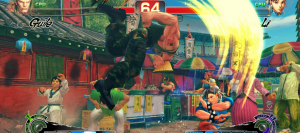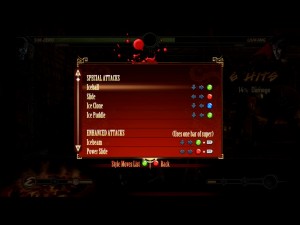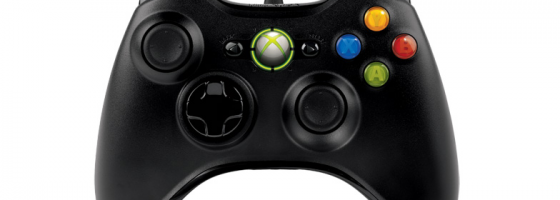Over the weekend, thanks to a sale I was finally able to play the latest Mortal Kombat. I’ve wanted to play it for two reasons: It was declared the best game in the series by many people and reports that the designers redesigned the entire combat system to be simplified.
Having played it, I was dismayed to find how much I did not like the new combat system and the reason has to do with how complex they ended up making a simplified control scheme.
Instituting Input:
To determine how complex the control scheme of a game is, we can break it down into three areas.
First is the number of inputs, AKA: How many buttons does your game use? In terms of complexity, the number of inputs is the biggest of the three factors when it comes to how complex your control scheme is.
The more buttons for someone to learn, the longer it takes to understand the control scheme. This was one of the reasons for the major change in accessibility on the consoles over the last decade. We saw developers transition to standardized control schemes for specific genres and cutting down on the number of inputs needed.
The best way to shave off inputs is with the use of context sensitive actions. Why have a dedicated “open door” button, when you can make your melee button handle that task when the need arises? One of the main reasons for the Wii’s popularity for casual gamers was that the control scheme had the fewest button inputs required on any game platform at the time.
The number of inputs needed is one of the reasons for the complexity in the fighting genre, as most fighting games will use every button on the controller or competitive gamers will use a fight stick.
While reducing inputs is a sure fire way to make your game easier to learn, you need to be careful about having too many commands associated to the same input. If your attack button is also your “dodge”,” jump” and “interact” button, chances are the player will have a hard time using the right command at the right time.
Our second factor is the depth of the commands in your game. Commands are essentially any moves or actions that your game has. The more commands required the player to learn, will have an effect on the complexity of the game.
The depth of the commands not only has to do with the number of commands, but how they are pulled off. Playing a game like Street Fighter 4, every character has a list of special moves that require specific inputs of the directional pad (or fight stick) and button presses to use. For example: quarter-circle forward and punch to perform a hadoken for Ryu.

Street Fighter 4 like many fighting games, made use of every button the gamepad and many gamers preferred fighting sticks for optimum play.
Going back to Mortal Kombat this is where the game is strangely enough, both on the complex side and on the simplified side.
Speaking about complexity, the game has four main attack buttons: two associated with fist attack and two for feet. In terms of the number of commands the game a lot of them, with different directional pushes will affect what attack is pulled out.
Not counting”Up” for the most part, that’s twelve combination commands right off the bat for people to remember. In terms of special moves was where Mortal Kombat was made simplified. As most special moves in the game only required three inputs: Left-Right- Punch, Down-Right-Kick and so on.
A huge cry from combinations like Zangief’s 360 degree input needed for his suplex attack. But where Mortal Kombat was adequate here, the final category is what hurts the game for me.
Finally we have the relationship between controller and commands. This category is about how the controls are laid out on the specified control input.
Now, this one is a bit tricky to explain and is perhaps the most innocuous of the three. Understanding where to put the commands in relation to the inputs is a very important step.
For example: You wouldn’t associate the Left D-Pad or select button for Fire when designing a first person shooter. This is one of those things that the only way to know for sure, is to play and see how everything feels.
One element that you can use to help is to associate commands to the buttons and use their position to help associate them. For instance in Assassin’s Creed the developers associated the different actions to the buttons in relation to how they would correspond to a human body. For example, the A button at the bottom would be used for the legs, X and B for the arms and Y for the head.

As you can see in this screenshot, subzero’s ice ball attack uses the A button which is associated with a kick attack causing a dissonance of control.
That way the player could associate the buttons to the positions and made it easier to learn.
This is where I had a problem with Mortal Kombat as many of the special moves weren’t associated with the inputs in my opinion.
For instance, there were several projectile based attacks that were launched from the hands, but were associated with the feet inputs. This kind of dissonance made it harder for me to learn the buttons.
Another part of this concept is to understand finger position, both on a gamepad or keyboard. When someone is holding a gamepad, their index and middle fingers will be in prime position to press the trigger and shoulder buttons. What that means is those four buttons should be assigned any important commands due to the ease that someone can hit them.
Figuring out the controls of your game may seem like an easy task compared to the programming or design, but little things can lead to big problems. It doesn’t matter how great your game was designed if no one can play it comfortably. Allowing players to alter the control scheme is a useful work around, but if you’re going for mass appeal, casual gamers won’t want to mess with the controls.
Fortunately, control design can only go so far, as even after all the new platforms; we still only have ten fingers to use. When someone is playing the game so comfortably that they forget that they’re holding a gamepad in their hands, you know you have a winning control scheme.



Pingback: Injustice Gods Among Us -- Mortal Kryptonite | Game Wisdom()